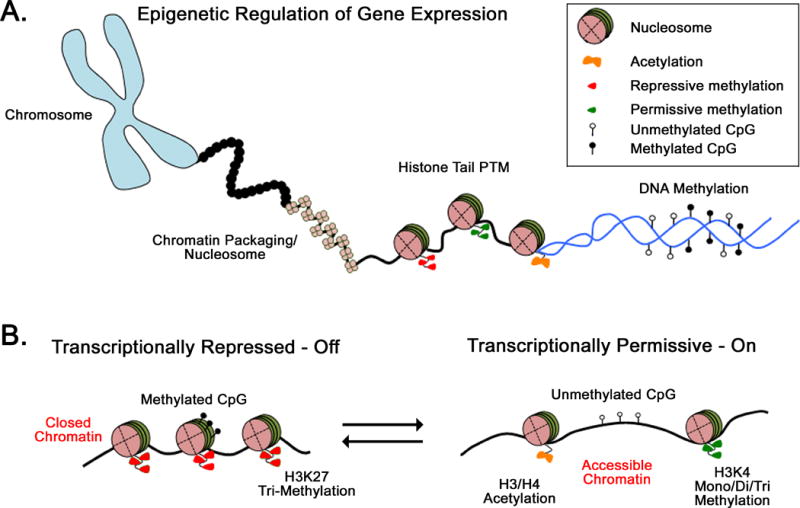Figure 2.

Chromatin organization, accessibility and gene expression. (A) A cartoon overview of various levels of chromatin organization. To accommodate the ~2m long human genomic DNA into the nucleus of a cell, the DNA exists as highly condensed structures called chromosomes. Dense packaging of the DNA into the chromosome in mediated in part by nucleosomes, composed of a histone octamer with DNA wrapped around it. Modifications to histone tails (acetylation-orange bowtie, repressive-red triangle or permissive-green triangle methylation) alters nucleosomal density near the promoter of a gene and regulates the accessibility of the chromatin. Finally, cytosine methylation at CpGs within the promoter is thought to provide the cell-division transmissible component of epigenetic transcriptional regulation. (B) Transcriptionally repressed versus active genetic locus. A transcriptionally repressed gene is characterized by the presence of nucleosome, enrichment of repressive histone modifications (lack of acetylation, H3K27 methylation-red), and DNA methylation in the promoter sequence. These modifications maintain a compact chromatin state and restrict gene expression. A transcriptionally permissive gene is characterized by absence of nucleosomes near the transcriptional start site, enrichment of permissive histone modifications (acetylation and H3K4 methylation), and CpG demethylation within the promoter.
